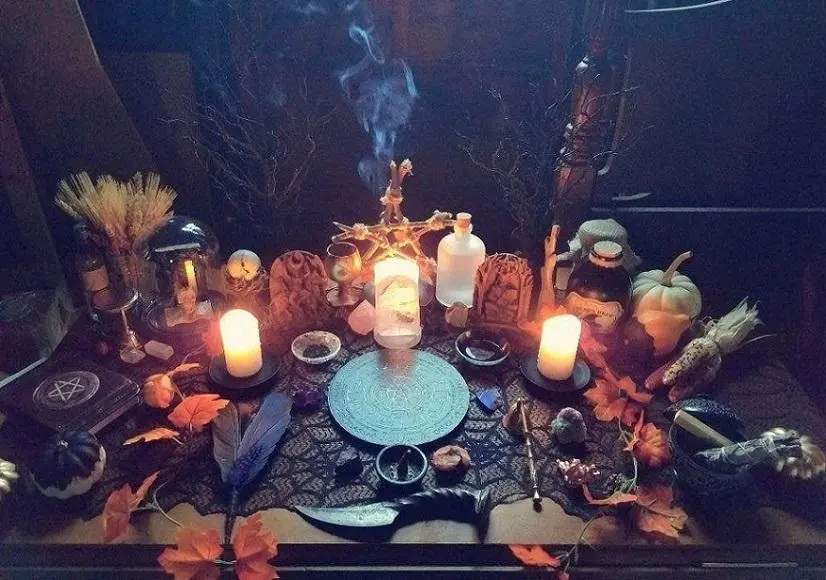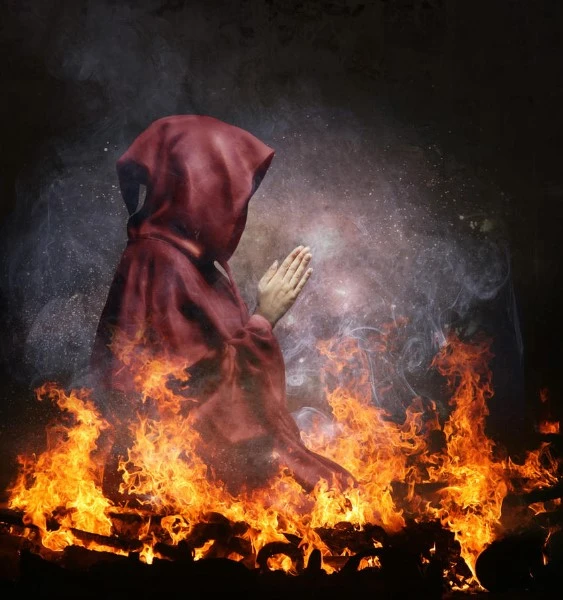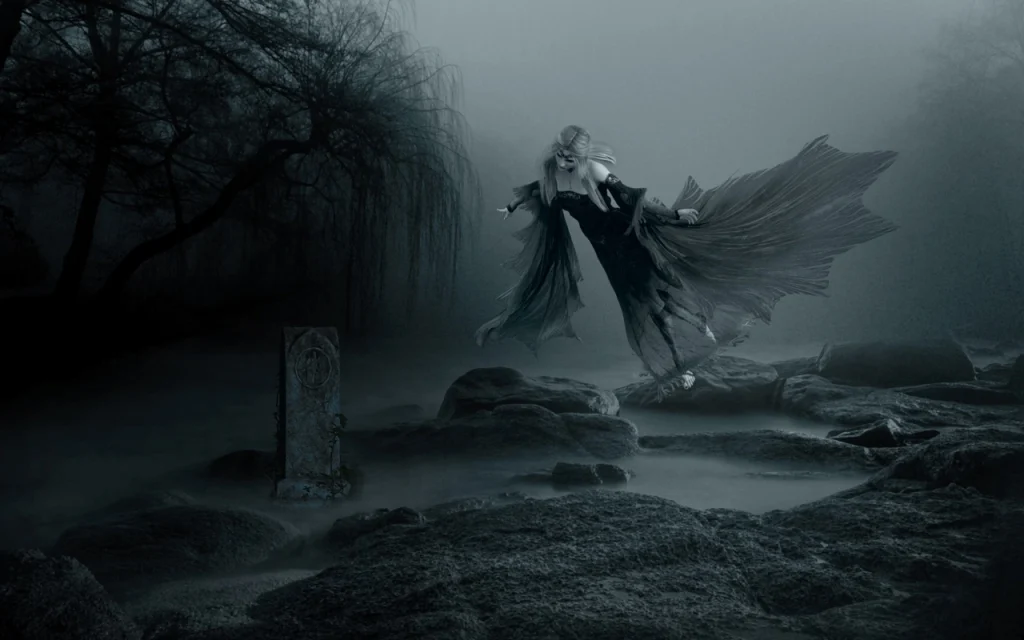In the annals of history, the profession of the witch hunter trainer remains one of the most enigmatic and obscure. Often overshadowed by the legends of witch hunts and trials, the trainers who prepared individuals to combat witchcraft and its alleged practitioners played a unique and influential role during periods of witch hysteria. This article in Witch Symbols seeks to shed light on the lesser-known aspects of the witch hunter trainer, exploring their responsibilities, methods, and the legacy they left behind.
Defining the Witch Hunter Trainer
Defining the role of the witch hunter trainer involves understanding the specific responsibilities and characteristics that distinguished these individuals during times of witch hysteria and persecution. Here, we delve deeper into what defined the witch hunter trainer:
- Specialized Knowledge: Witch hunter trainers possessed specialized knowledge in the field of witchcraft and demonology. They were considered experts in identifying, prosecuting, and combating witches. This expertise was often rooted in a deep understanding of religious texts, folklore, and superstitions.
- Educator and Mentor: One of the primary roles of a witch hunter trainer was that of an educator and mentor. They were responsible for imparting their knowledge and skills to those who were tasked with hunting and prosecuting alleged witches. These students were typically officials, clergymen, or law enforcement personnel.
- Identification of Witches: Witch hunter trainers taught their students how to recognize individuals suspected of practicing witchcraft. They believed that witches displayed distinct physical and behavioral traits, which they passed on through instruction. These traits could include unusual birthmarks, affiliations with animals, or behaviors that were considered outside the norm.
- Interrogation Techniques: Another crucial aspect of a witch hunter trainer’s role was instructing their students in interrogation techniques. The goal was to extract confessions from individuals accused of witchcraft. Unfortunately, this often involved the use of brutal and coercive methods, including torture.
- Exorcism and Demonology: Witch hunters believed that witches were often possessed by demons or evil spirits. Therefore, trainers provided instruction in exorcism and demonology. This training included the ability to recognize signs of demonic influence and perform rituals and prayers to expel these spirits.
- Legal Knowledge: To effectively prosecute witches, witch hunters needed a solid understanding of the legal aspects of witch trials. Witch hunter trainers taught their students the legal framework and procedures required for conducting witch trials, which included accusations, evidence gathering, and sentencing.
- Influence on Judicial Outcomes: Witch hunter trainers had a significant influence on the judicial outcomes of witch trials. Their guidance and expertise played a pivotal role in shaping the course of these trials and, unfortunately, often resulted in unjust convictions and executions.
- Propagation of Beliefs: Witch hunter trainers were instrumental in propagating the prevailing beliefs of their time regarding witchcraft. Their teachings reinforced the notion that witchcraft was a threat to society and required extreme measures to combat.
- Written Materials: Some witch hunter trainers authored written materials that served as textbooks for their students. The most infamous of these texts is the “Malleus Maleficarum” (The Hammer of Witches), written by Heinrich Kramer and Jacob Sprenger in the late 15th century. This witchcraft book provided detailed instructions on identifying, prosecuting, and eradicating witches.
Understanding the role and characteristics of the witch hunter trainer is essential for comprehending the historical context of witch hunts and trials. While these trainers were seen as authorities in their time, their methods and beliefs have come under scrutiny and criticism in modern times, as they were responsible for the unjust persecution and suffering of countless innocent individuals, primarily women.


Read More: What Does the Bible Say About Witchcraft?
Historical Context
The historical context of the witch hunter trainer is rooted in the broader history of witch hunts and trials that occurred primarily during the Early Modern period, spanning from the late 15th century to the late 18th century. Understanding this context is essential to comprehend the emergence and role of witch hunter trainers:
- Late Medieval and Early Modern Europe: The period leading up to and during the Early Modern era was characterized by significant social, religious, and political changes in Europe. The late medieval period saw the emergence of Renaissance humanism, the Protestant Reformation, and the Catholic Counter-Reformation. These movements brought about religious and ideological shifts that contributed to the witch hunts.
- Religious Conflict: The religious landscape of Europe was marked by tension and conflict. The Protestant Reformation, initiated by Martin Luther in the early 16th century, led to schisms within the Catholic Church and the formation of various Protestant denominations. These religious divisions heightened religious fervor and contributed to the belief in witchcraft as a spiritual threat.
- Malleus Maleficarum: The publication of the “Malleus Maleficarum” (The Hammer of Witches) in 1487 by Heinrich Kramer and Jacob Sprenger marked a pivotal moment in the history of witch hunts. This manual provided a framework for identifying, prosecuting, and eradicating witches. It emphasized the dangers of witchcraft and played a significant role in shaping the beliefs and methods of witch hunter trainers.
- Social and Economic Factors: Witch hunts often occurred in regions experiencing social and economic upheaval. Factors such as crop failures, disease outbreaks, and economic instability contributed to a climate of fear and scapegoating. Accusations of witchcraft were frequently used to explain these hardships.
- Gender Roles: Gender roles and prejudices played a significant role in the persecution of alleged witches. Women, particularly older women or those who did not conform to societal norms, were disproportionately accused of witchcraft. Witch hunter trainers perpetuated and reinforced these gender biases.
- Political Authorities: Local and regional authorities often played a crucial role in conducting witch trials. In many cases, witch hunter trainers were appointed or commissioned by these authorities to oversee the trials and ensure conformity with legal procedures.
- Torture and Interrogation: Torture and coercive interrogation methods were commonly used during witch trials to extract confessions from accused individuals. Witch hunter trainers were responsible for instructing officials and judges on the use of these methods.
- Decline of Witch Hunts: Over time, the witch hunts began to wane as skepticism about witchcraft accusations grew, and Enlightenment ideals spread. Legal reforms and changing societal attitudes led to a decline in witch trials by the late 18th century.
Understanding the historical context of the witch hunter trainer is crucial for recognizing the factors that contributed to the persecution of alleged witches and the methods used in witch hunts. It also highlights the broader social, religious, and political dynamics that shaped this dark chapter in history.
Responsibilities of a Witch Hunter Trainer
The responsibilities of a witch hunter trainer were multifaceted and crucial during periods of witch hysteria. These trainers were tasked with preparing individuals to combat witchcraft and its alleged practitioners, and their responsibilities encompassed various aspects:
A. Education of Witch Hunters: The primary responsibility of a witch hunter trainer was to educate those who were designated as witch hunters. These individuals were typically officials, clergymen, or law enforcement personnel entrusted with identifying, prosecuting, and eradicating witches. The trainer served as the educator who imparted the knowledge and skills necessary for this role.
B. Identification of Witches: Witch hunter trainers instructed their students on how to identify individuals suspected of practicing witchcraft. They believed that witches displayed certain physical and behavioral traits that could be recognized. This training included descriptions of supposed witch’s marks, associations with animals, unusual birthmarks, and behaviors that were deemed suspicious or unnatural.
C. Interrogation Techniques: A significant aspect of the trainer’s responsibilities was teaching students interrogation techniques. This training aimed to extract confessions from individuals accused of witchcraft. Unfortunately, these techniques often involved the use of harsh and coercive methods, including torture, to force confessions from the accused.
D. Exorcism and Demonology: Witch hunter trainers provided instruction in exorcism and demonology. It was commonly believed that witches were possessed by demons or evil spirits. Trainers taught their students how to recognize signs of demonic influence and perform rituals and prayers to expel these malevolent entities.
E. Legal Knowledge: To effectively prosecute witches, witch hunters needed a comprehensive understanding of the legal aspects of witch trials. Witch hunter trainers were responsible for teaching their students the legal framework and procedures involved in conducting witch trials. This included guidance on accusations, evidence gathering, courtroom proceedings, and sentencing.
F. Spiritual Guidance: Beyond practical skills, trainers often provided spiritual guidance to their students. This guidance was rooted in religious beliefs and theology, reinforcing the idea that witches were agents of evil and needed to be eradicated for the sake of the community’s spiritual well-being.
G. Influence on Judicial Outcomes: Witch hunter trainers wielded significant influence over the judicial outcomes of witch trials. Their teachings and guidance played a pivotal role in shaping the course of these trials, often leading to unjust convictions and harsh sentences.
H. Development of Manuals: Some witch hunter trainers authored manuals and texts that served as instructional guides for their students. Perhaps the most infamous of these manuals is the “Malleus Maleficarum” (The Hammer of Witches), authored by Heinrich Kramer and Jacob Sprenger in the late 15th century. This manual provided detailed instructions on identifying, prosecuting, and eradicating witches and served as a foundational text for witch hunters.
In summary, the responsibilities of a witch hunter trainer encompassed education, identification of alleged witches, teaching interrogation techniques, imparting knowledge of exorcism and demonology, legal guidance, and spiritual reinforcement of prevailing beliefs about witchcraft. Tragically, these trainers played a pivotal role in the witch hunts and trials of the Early Modern period, which led to the persecution and execution of countless innocent individuals, primarily women.
Methods of a Witch Hunter Trainer
The methods employed by a witch hunter trainer were instrumental in preparing individuals to combat witchcraft and its alleged practitioners during periods of witch hysteria. These trainers utilized a combination of educational, instructional, and practical approaches to train witch hunters. Here are further insights into the methods of a witch hunter trainer:
- Texts and Manuals: Witch hunter trainers often relied on written materials, textbooks, and manuals to educate their students. These texts served as comprehensive guides covering various aspects of identifying, prosecuting, and eradicating witches. The most notorious of these texts is the “Malleus Maleficarum” (The Hammer of Witches), authored by Heinrich Kramer and Jacob Sprenger in the late 15th century. This manual provided detailed instructions on witchcraft detection, trials, and the use of torture to extract confessions.
- Oral Tradition: While written texts were essential, some witch hunter trainers passed down their knowledge and expertise through oral tradition. This approach involved direct, one-on-one instruction, discussions, and mentorship. Apprentices and successors learned from their trainers through a close and personal teacher-student relationship.
- Demonstrations: In some cases, witch hunter trainers used practical demonstrations to illustrate key concepts to their students. These demonstrations could involve showing how to identify supposed witches based on physical or behavioral traits, performing rituals of exorcism, or simulating aspects of a witch trial. Demonstrations provided a hands-on approach to learning.
- Questioning and Dialogue: Trainers engaged in discussions and dialogues with their students, encouraging them to ask questions and seek clarification. Through these interactions, students could gain a deeper understanding of the intricacies of witch hunting and the rationale behind certain practices.
- Case Studies: Witch hunter trainers often presented case studies and historical examples of alleged witches and their trials. These case studies served as real-life examples that illustrated the practical application of the methods and theories being taught. Analyzing past cases allowed students to learn from both successful and unsuccessful witch hunts.
- Role-Playing: Some trainers incorporated role-playing exercises into their instruction. This method allowed students to simulate various scenarios they might encounter during witch trials, including interactions with accused witches, witnesses, and judges. Role-playing helped students develop the skills necessary for effective witch hunting.
- Religious and Theological Study: A significant component of a witch hunter trainer’s instruction involved religious and theological study. Trainers emphasized the religious perspective on witchcraft, reinforcing the belief that witches were agents of evil and that witch hunting was a divine duty. This religious context was integral to the training process.
- Supernatural Beliefs: Witch hunter trainers often cultivated and reinforced supernatural beliefs among their students. This included instilling the conviction that witches posed a grave threat to society and that their actions were driven by malevolent forces, such as demons or the devil. Such beliefs fueled the zeal of witch hunters.
- Practical Experience: In some instances, students accompanied their trainers to witness or participate in actual witch trials. This hands-on experience allowed students to observe the practical application of their training in real-life situations.
- Interactions with Accused Witches: Trainers may have arranged for their students to interact with individuals accused of witchcraft. This could involve questioning, examining, or confronting accused witches as part of their education.
In summary, the methods of a witch hunter trainer encompassed a wide range of educational approaches, from written texts and oral tradition to practical demonstrations, role-playing, religious study, and real-life experience. These methods were designed to equip individuals with the knowledge and skills required for witch hunting during periods of intense witch hysteria, often resulting in the persecution and suffering of countless innocent individuals.


Legacy and Controversy
The legacy and controversy surrounding the witch hunter trainers are complex and multifaceted, reflecting the historical and moral complexities of their role during periods of witch hysteria. Here, we delve into the legacy and controversy associated with witch hunter trainers:
Legacy:
- Historical Understanding: The legacy of witch hunter trainers contributes to our historical understanding of the witch hunts and trials that occurred primarily during the Early Modern period (15th to 18th centuries). Their teachings, methods, and manuals provide valuable insights into the social, religious, and cultural dynamics of that time.
- Legal Precedents: The witch trials influenced legal systems in many regions. The documentation and procedures developed by witch hunter trainers, while deeply flawed and unjust, set legal precedents that continue to be studied and analyzed by legal scholars.
- Literature and Folklore: The legacy of witch hunter trainers has left an indelible mark on literature, folklore, and popular culture. The “Malleus Maleficarum,” in particular, has become a symbol of witchcraft persecution and continues to be referenced in modern works of fiction and historical analysis.
- Cautionary Tale: The controversial and often unethical methods employed by witch hunter trainers serve as a cautionary tale about the dangers of superstition, prejudice, and unchecked authority. Their legacy reminds us of the consequences of mass hysteria and the harm that can result when fear and misinformation prevail.
Controversy:
- Unjust Persecution: The most significant controversy surrounding witch hunter trainers is their role in the unjust persecution of countless innocent individuals, primarily women. The methods they taught, including torture and forced confessions, led to wrongful convictions, imprisonment, and execution of alleged witches.
- Misuse of Power: Witch hunter trainers often held significant power and influence during witch trials. Their teachings reinforced biases and prejudices against marginalized groups, particularly women and those seen as socially deviant. Critics argue that these trainers exploited their authority and contributed to the suffering of innocent people.
- Gender Bias: Witch hunter trainers propagated and reinforced gender biases, as the majority of those accused and persecuted as witches were women. Their teachings perpetuated harmful stereotypes about women and their alleged susceptibility to witchcraft.
- Religious Zealotry: Critics contend that witch hunter trainers were driven by religious zealotry, leading them to view witchcraft as a spiritual threat that required extreme measures to combat. This religious fervor clouded their judgment and contributed to the severity of witch trials.
- Ethical and Moral Criticism: The methods employed by witch hunter trainers have been widely condemned on ethical and moral grounds. Torture, coercion, and the use of unfounded evidence violate fundamental principles of justice and human rights, making their legacy a dark stain on history.
- Reevaluation and Repudiation: In modern times, there has been a concerted effort to reevaluate and repudiate the methods and beliefs of witch hunter trainers. Many historians, scholars, and organizations work to shed light on the injustices of the witch hunts and trials, acknowledging the wrongful persecution of countless individuals.
In conclusion, the legacy of witch hunter trainers is marked by its historical significance, its influence on legal systems, and its enduring presence in literature and folklore. However, it is also deeply controversial due to their role in perpetuating unjust persecution, gender bias, and religious zealotry. Their methods and beliefs serve as a stark reminder of the dangers of hysteria, prejudice, and unchecked authority, prompting ongoing efforts to reassess and condemn their actions from an ethical and moral standpoint.
Final Thoughts
The role of the witch hunter trainer is a complex and controversial one. While their historical significance cannot be denied, their methods and beliefs have come under scrutiny in modern times. The profession of the witch hunter trainer serves as a reminder of the dark chapters in human history when fear, superstition, and intolerance led to the persecution of innocent individuals. Understanding this enigmatic profession is essential for a more comprehensive comprehension of the witch hunts and trials that scarred our past.
sources:

